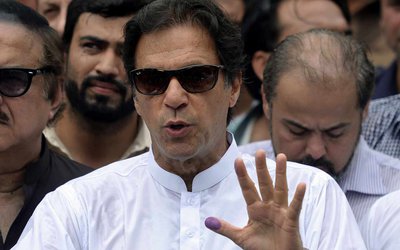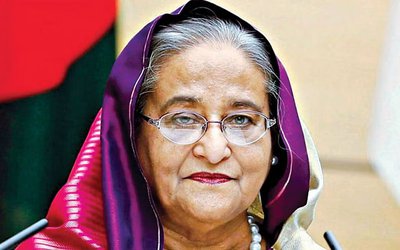
Bhutan’s fiscal deficit has increased to more than Nu 22.88 billion or 11.25 percent of the GDP in the fiscal year 2022-23.
Four years ago in the 2018-19 fiscal year, the fiscal deficit was just about Nu 2.7 billion (B) or 1.5 percent of the GDP. This means that the fiscal deficit has increased by 734 percent in just four years.
A fiscal deficit is a gap between the government’s total revenue and total expenditure which needs to be filled with borrowings.
The increase in the fiscal deficit has partly also been attributed to the Covid-19 pandemic. However, the fiscal deficit has increased despite austerity measures and budget cuts for some agencies including Parliament.
In the fiscal year 2020-21, the total revised budget was Nu 85.38B while the total budget in the fiscal year 2022-23 is Nu 81.8B.
In other words, the budget allocation during the period has decreased by 4 percent, while the fiscal deficit has increased by 105 percent.
The total resources in the fiscal year are Nu 51.925B while the total expenditure is Nu 74.807B.
Finance Minister Namgay Tshering in the budget report said that the government would fill up the financing gap through external and domestic borrowings.
According to some economists, an increase in the fiscal deficit can boost consumption and investments to stimulate a sluggish economy.
However, many express concerns about the issues related to the burgeoning fiscal deficit, one of which is the increasing public debt. The government has projected the public debt at 131.1 percent of GDP in fiscal 2022-23.
The 13th Plan, which is expected to be drafted based on the 21st Century Economic Roadmap, is also expected to make it difficult for the government to reduce the fiscal deficit.
The 13th Plan is expected to be ambitious, which entails additional borrowings.
According to the estimates of the Gross National Happiness Commission (GNHC) in the concept note for the 13th Plan, the government will have to mobilise from Nu 750B to Nu 1,250B in the 13th Plan to achieve an average GDP growth rate of 10 percent in the next 10 years.
The opposition MP from Dewathang Gomdar, Ugyen Dorji, said that the rising fiscal deficit was a “matter of great concern” for the country. “It means our consumption is rising without commensurate income generation.”
He said that the increasing fiscal deficit would exacerbate the debt burden. “If the debt burden reaches the tipping point, we may go bankrupt.”
Ugyen Dorji said that the country’s exports were dwindling while imports were increasing.
However, one of the members of the economic affairs committee of the National Assembly, Kinley Wangchuk, said that the rising fiscal deficit was not a “deeply worrisome trend” as the deficit shot up mainly during critical times between 2020-22 when Covid-19 caused economic disruptions.
The government, he said, had to make huge expenditures on Covid-19 facilities such as quarantines and vaccines. The government also spent a significant among of money on agriculture buy-back schemes, he added.
“But if the fiscal deficits continue to remain at the same level or become worst after opening the border and relaxing the trade restrictions, then it is something to worry about,” Kinley Wangchuk said.
He said that it entailed a temporary debt burden but that the payoff period was promising as the expenditure is mainly incurred to ensure food security.
“With increased investments in the agriculture sector (water, land development and rural roads), trade deficits can be managed, as there will be a drastic decline in country’s imports of agriculture produces,” he said.
The country’s fiscal deficit is one of the highest in the region. India’s fiscal deficit for the financial year 2022-23 has been estimated at 6.4 percent of the GDP, according to Indian news reports. Similarly, Nepal’s fiscal deficit is projected at 7 percent of the GDP in 2021-22.
However, Sri Lanka, which is going through an economic crisis, had a fiscal deficit of about 11.1 percent in 2020, according to some reports.
According to the budget report 2022-23, the government will experience a continuous fiscal deficit going forward.
The external borrowings are estimated at Nu 5.47B in the fiscal year 2022-23 and decline substantially in the following years owing to a lack of commitment from the official development creditors at this point in time.
However, it will improve in the future as and when we ascertain commitment from Official Development Assistance (ODA), it adds.
On the domestic borrowing requirement, it is projected to remain on the increasing trajectory owing to the persistent fiscal deficit in the future.
At the same time, the domestic repayment is expected to increase relentlessly for the redemption of the past issuance of government bonds and projected T-Bills for financing purposes.
As of March 31, the external debt constituted 89.7 percent of total public debt and accounted for 117.4 percent of estimated GDP.
Source: kuenselonline.
- Biden And Netanyahu Discuss Gaza Ceasefire
- Jul 26, 2024
- Paris Olympic Will Start On Saturday
- Jul 25, 2024
- IOC Names Hosts Of Winter Games
- Jul 25, 2024
- 85 % Paddy Plantation Completes Nationwide
- Jul 24, 2024
- Kamala Harris Hits Presidential Campaign Trail
- Jul 24, 2024















